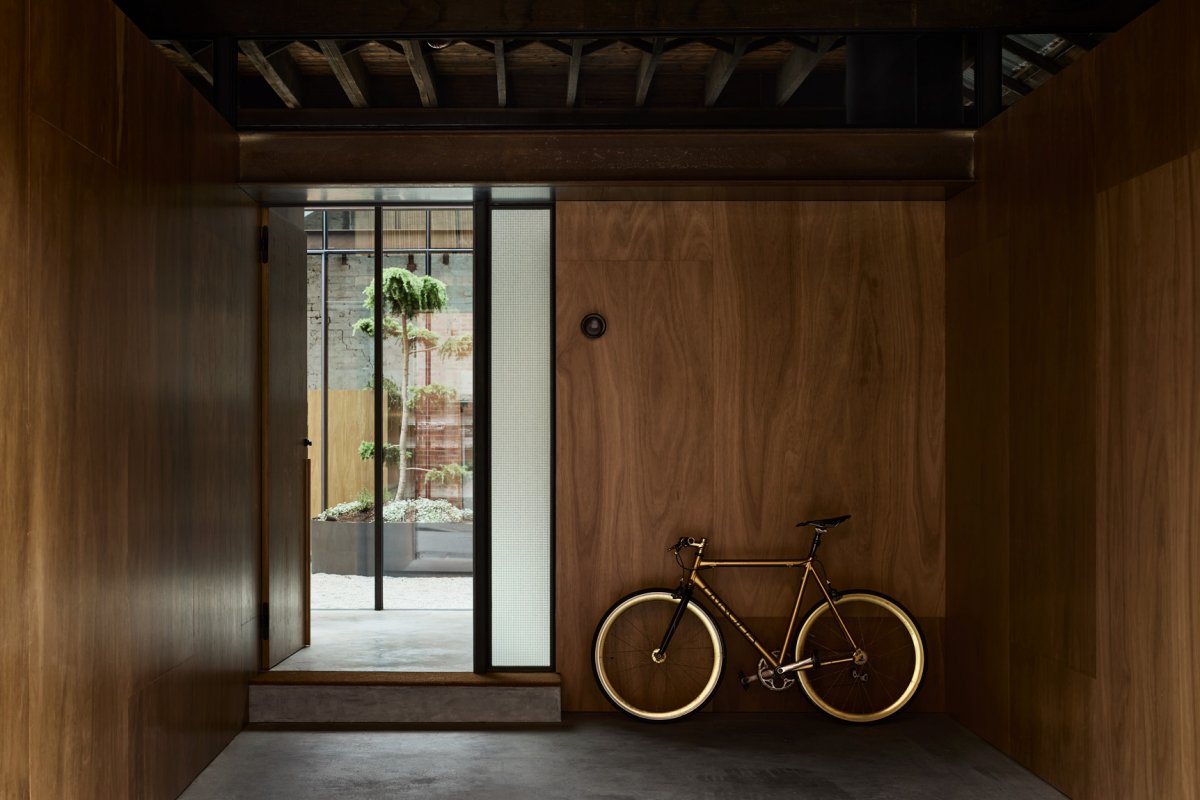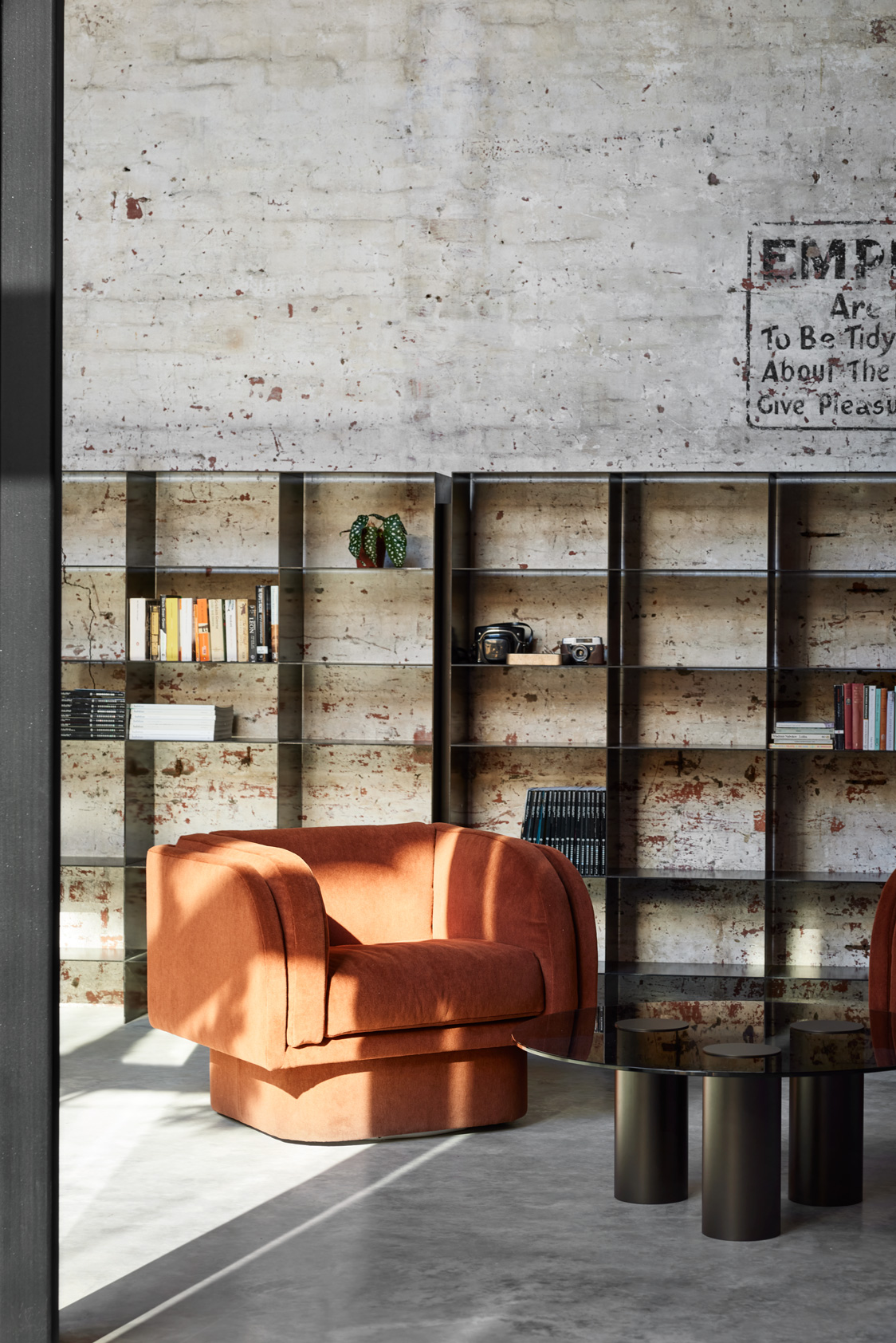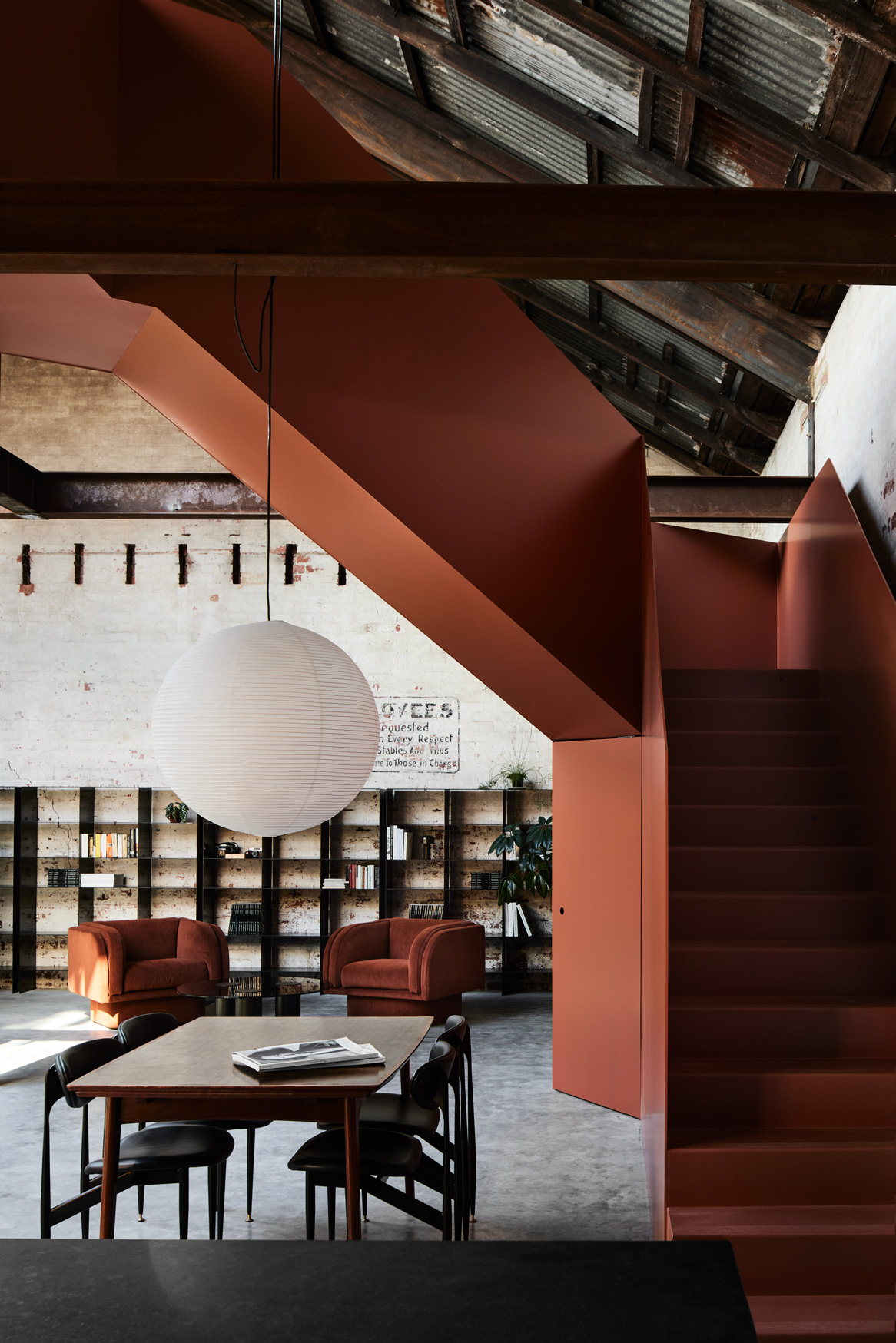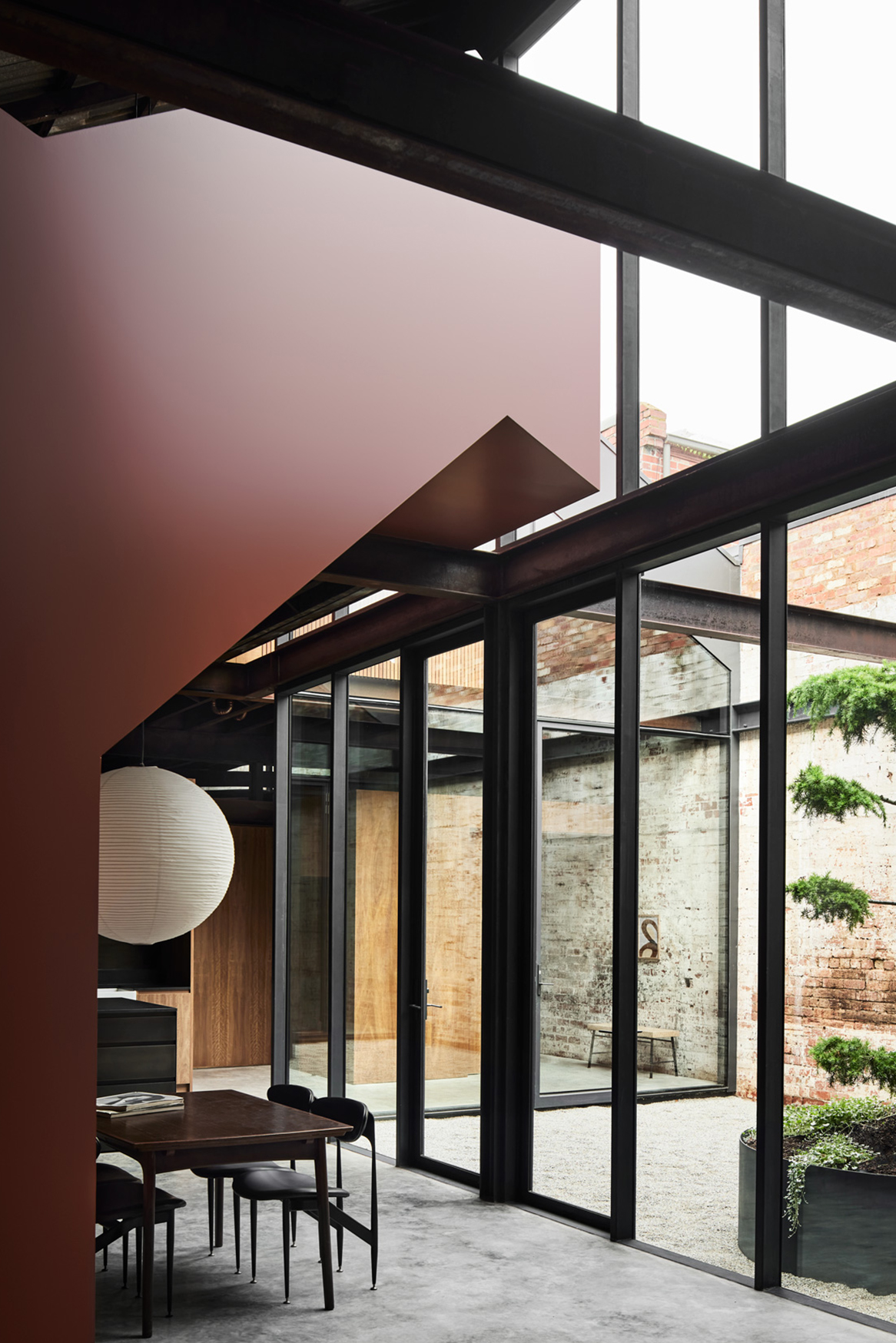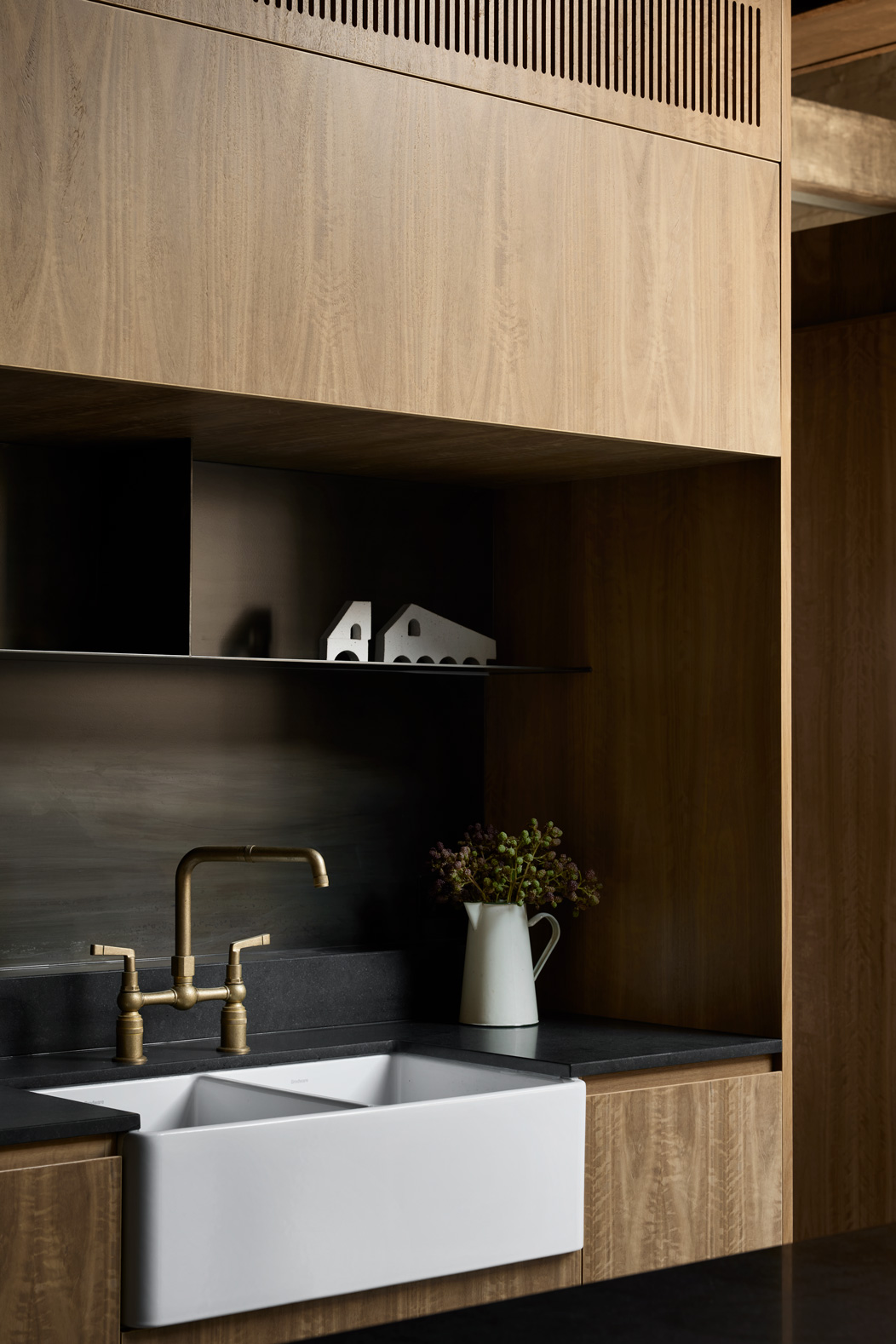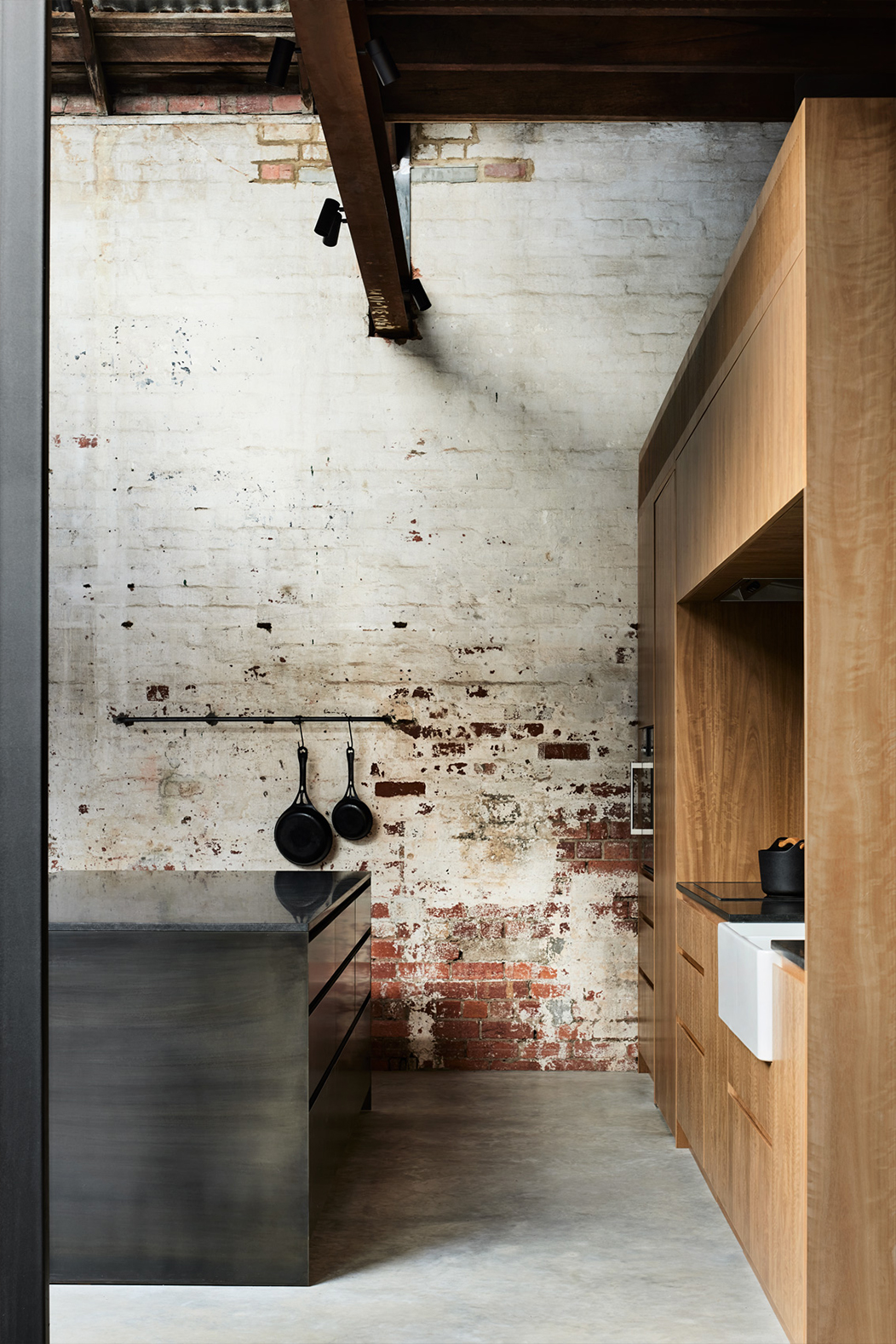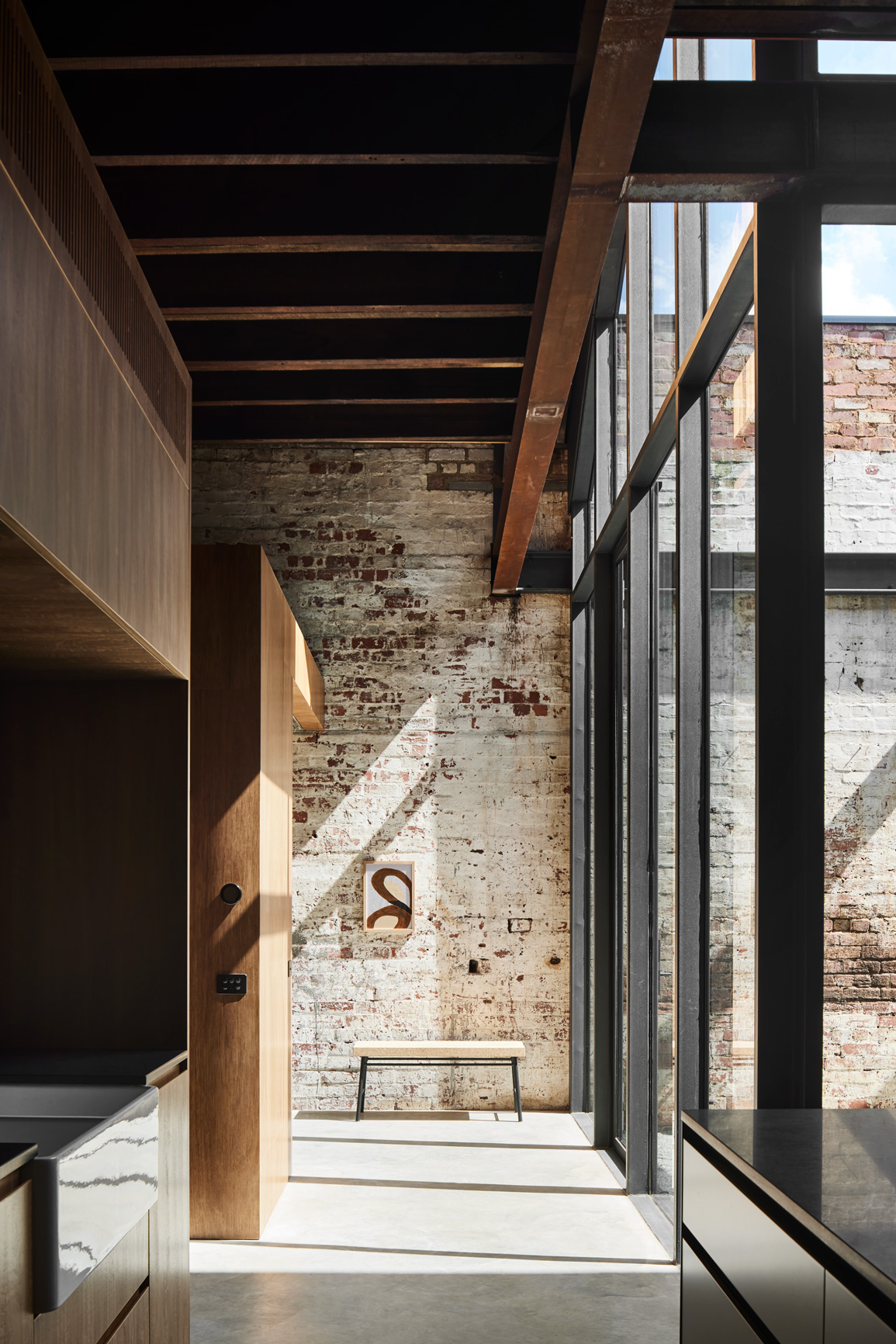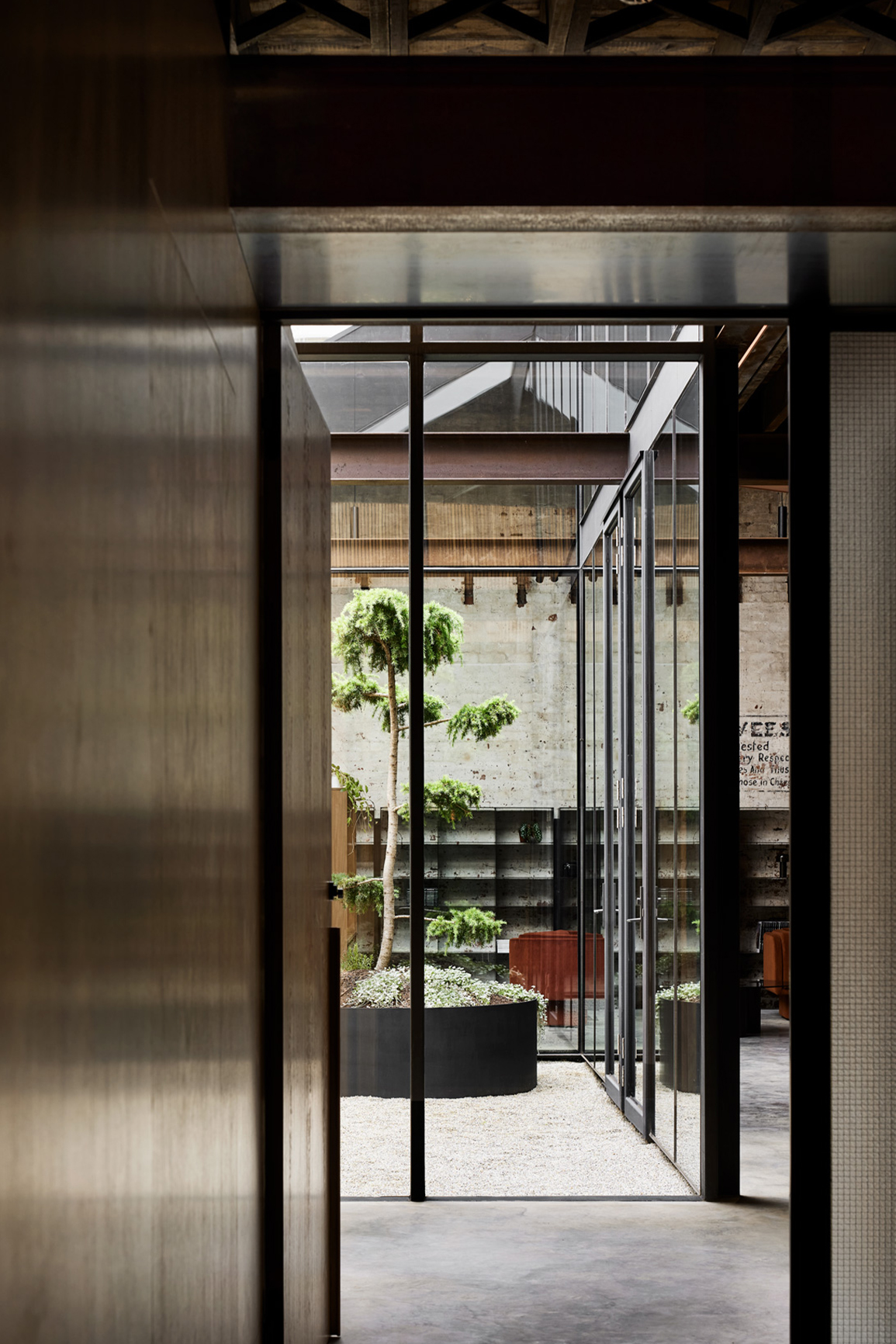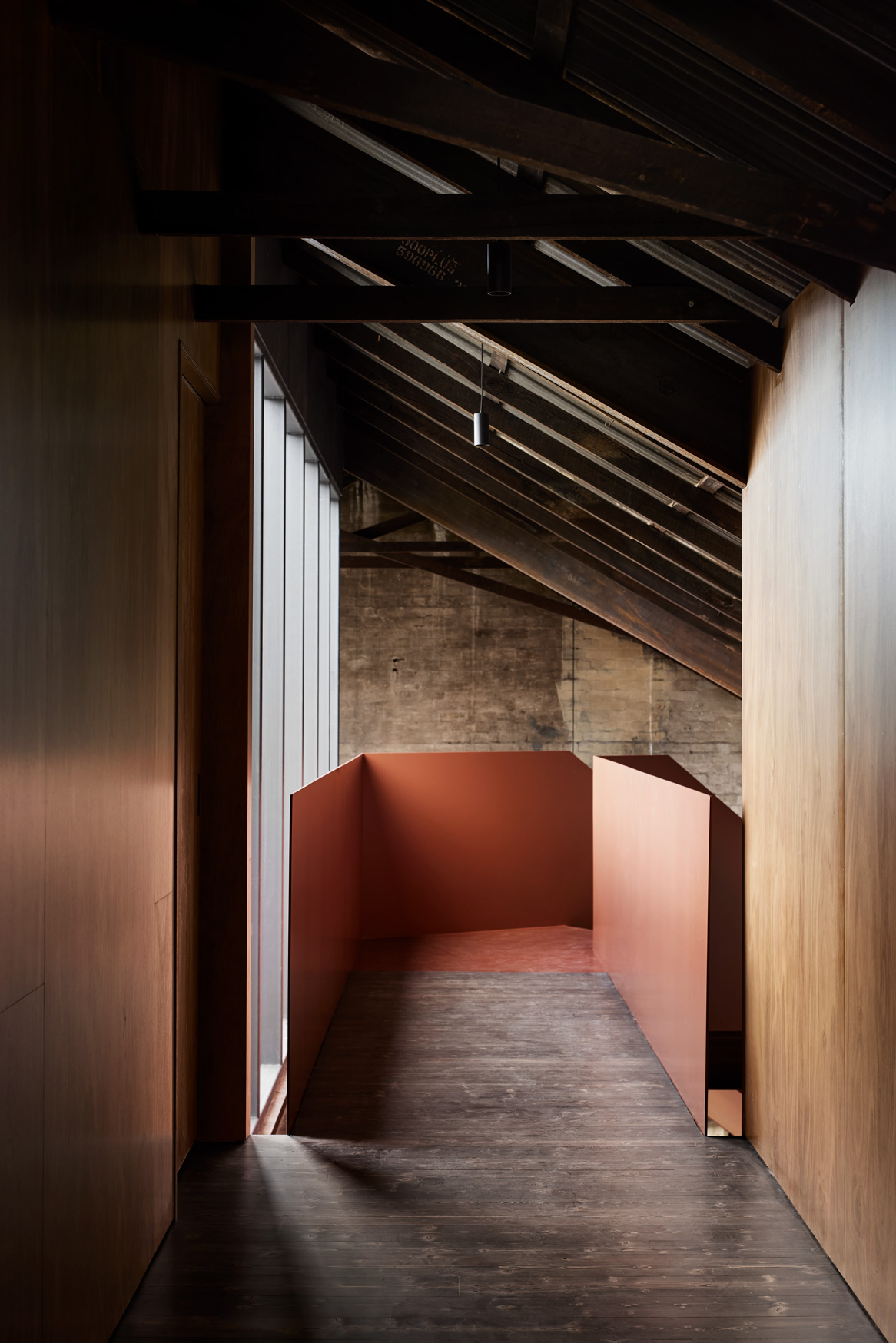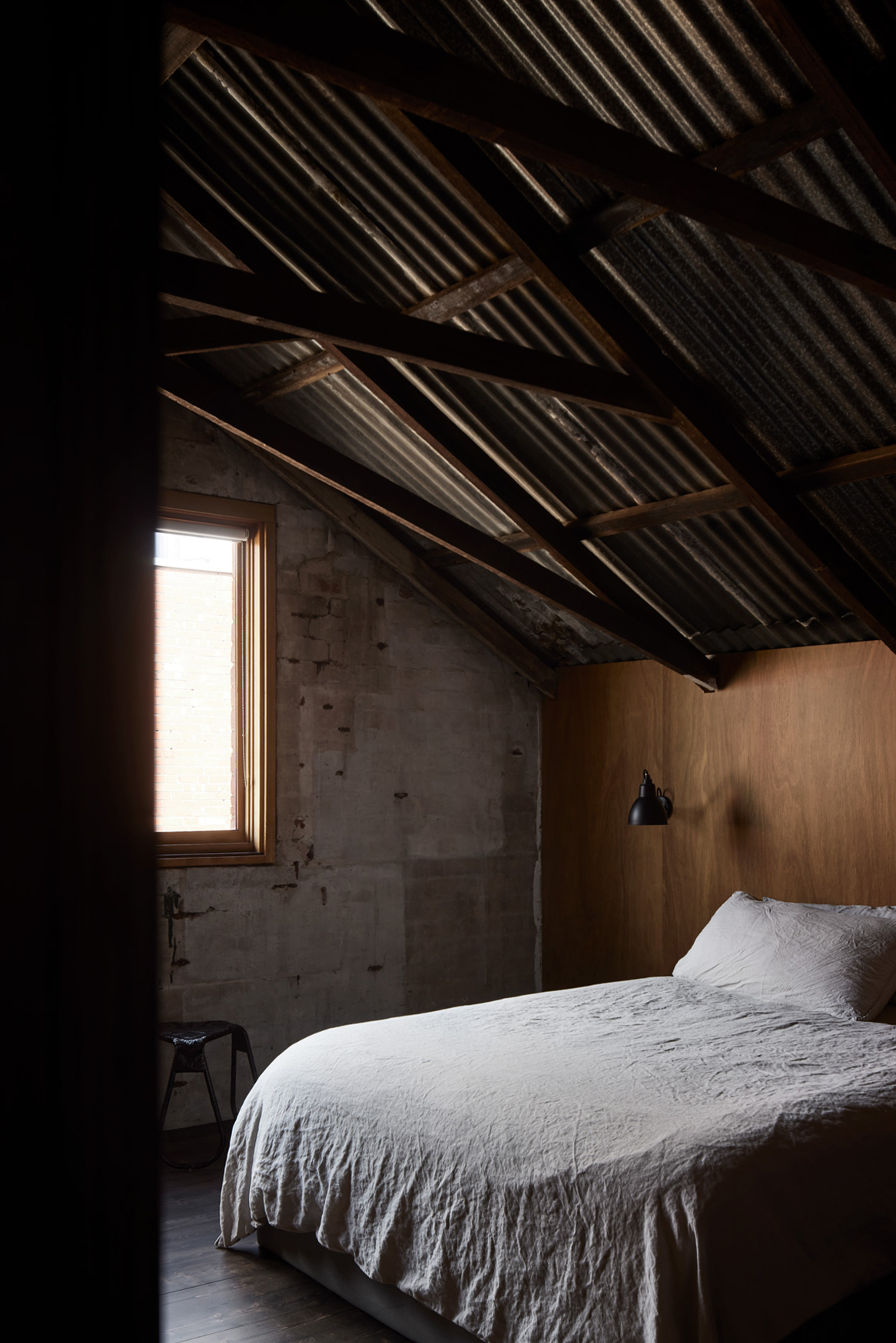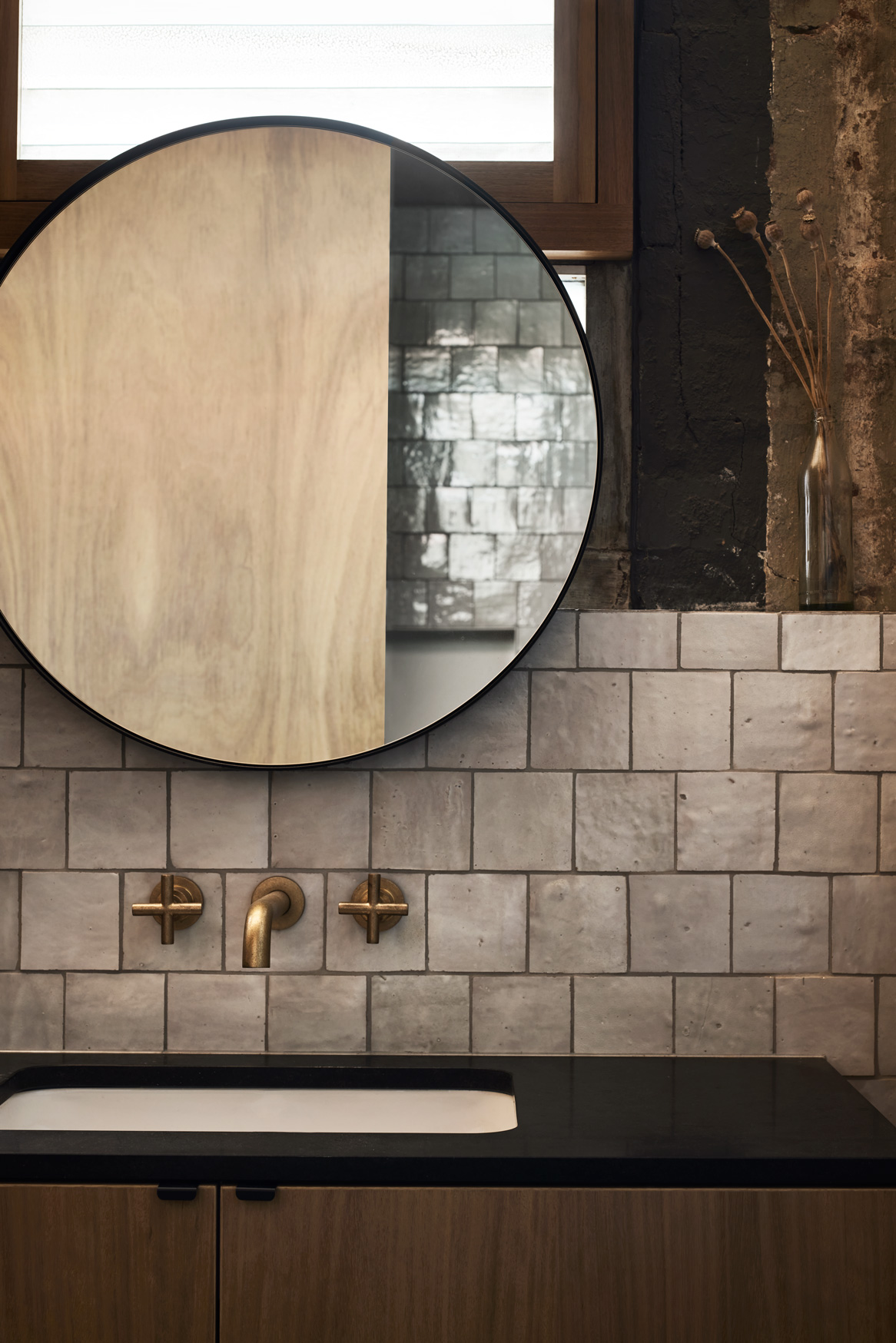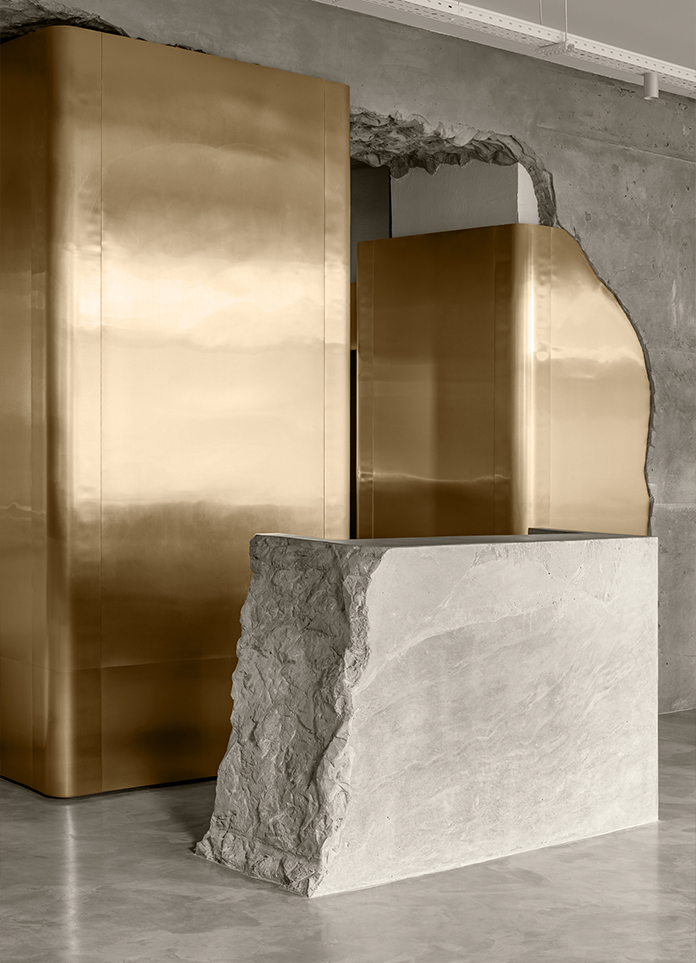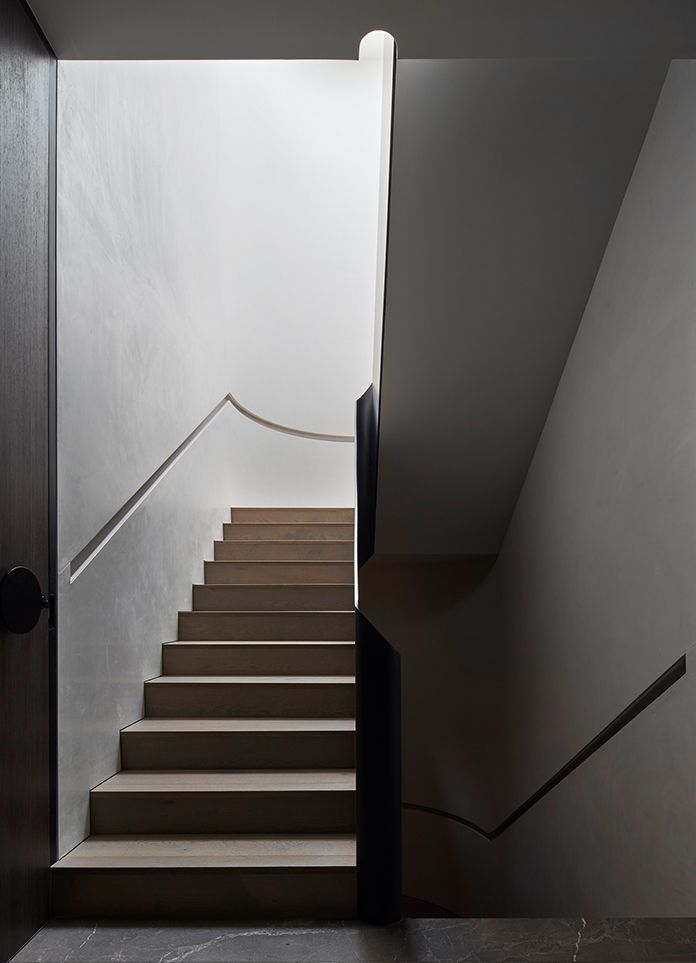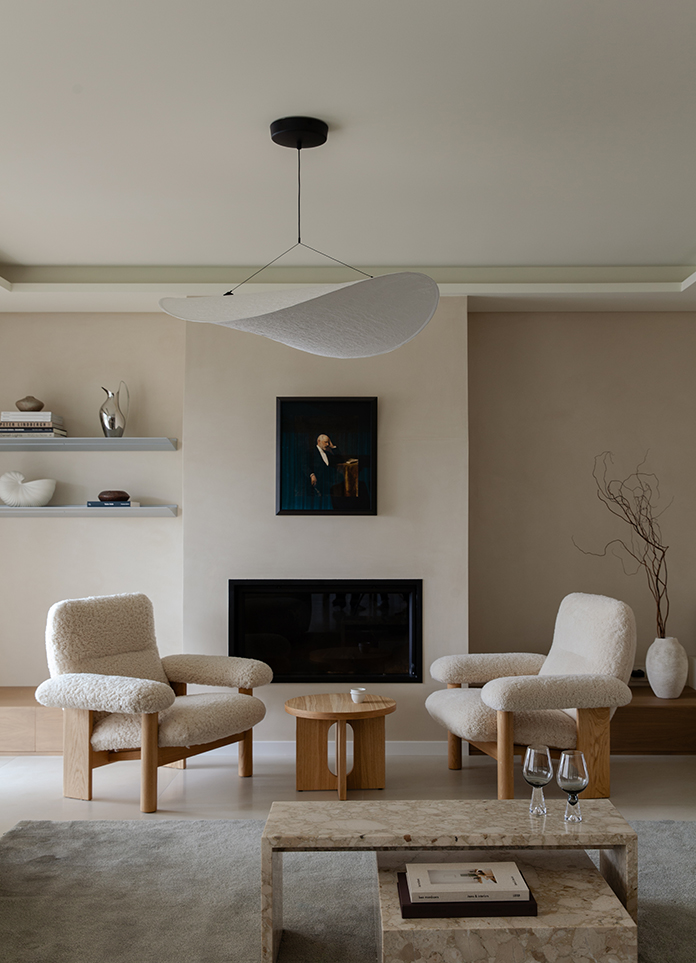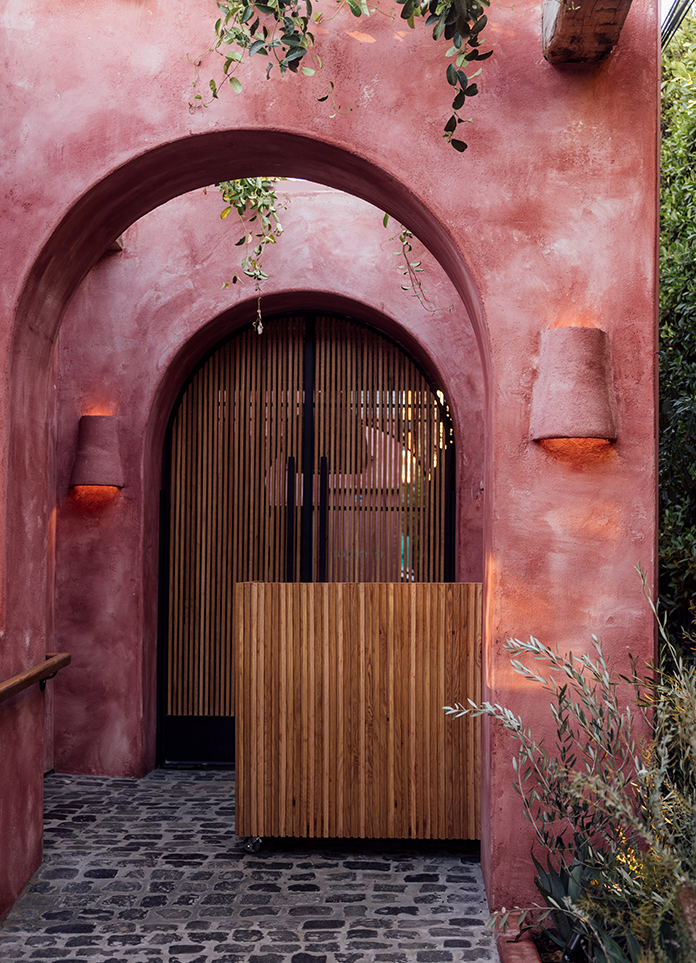
From the street, the transformation of the Stable and Cart House is barely noticeable. It sits as it always has, layered with the patina of the last 100 years. Yet internally, this warehouse has been considerately converted to a domestic residence by Clare Cousins Architects through a series of key insertions that modify function even as they retain and emphasise the building’s history.
From the exterior, the rich red bricks are marked with traces of what came before; the original façade has been retained – it is “in its found condition,” says Clare Cousins, Director of the practice. However, from the outside, you are afforded a glimpse to the insertion of an internal courtyard. This glimpse is the only suggestion to the public that the warehouse, one of many in its locale, has perhaps been altered. Internally, a veil of scratched white paint lingers on the brick walls. A sign, painted on the wall looking over the now living room, still reads, “Employees Are Requested To Be Tidy in Every Respect About The Stables And Thus Give Pleasure To Those in Charge.” These traces provide more than a stylistic backdrop to the warehouse aesthetic. As authentic touchpoints, they give space to voices of the people that have previously passed through these doors.
In contrast, rich blackbutt timber-clad rooms encircle the courtyard providing utility and privacy. On the ground level, these rooms are defined by inhabited walls that house various functions. In not reaching the double-height ceiling, they help to domesticate the warehouse. Further, the timber warms and softens the interior. Likewise, the timber bath, surrounded by a timber floor and walls, feels casually luxurious and provides an elegant point of contrast to the industrial feel of the steel additions.Subfloor insulation and a highly insulated ceiling structure, hidden underneath the galvanised corrugated roof, enable the house’s history to be read but also ensure the interior is comfortable and thermally secure. Operable skylights have also been added to allow for thermal purging. It is the balance between the prominent new features, which have thoughtful links with the past, and these hidden insertions that demonstrate the careful line tread by the architects between new and old.
The subtlety of the renewal of the Stable and Cart House from the exterior presents a perspective as to how we should value the existing fabric of the city. A hundred years ago, at the time this building was being constructed, a prominent idea in modernist architectural thinking was to rebuild the world from scratch. Now, the background condition to most building is understanding the context of what is already there. This notion is taken further by Clare Cousins Architects, in the care taken for the existing building. The architects’ stewardship of the conversion and of the memory of what was there before demonstrates an environmentally considerate approach. Clare expresses that today, “there is a responsibility for the broader profession to practice responsibly, to salvage, re-use, restore and to build quality design that will last.”
There is a careful elegance to the new insertions made at the Stable and Cart House. Links have been made between the new additions and the found. Layers of the past meet a layering of contemporary material. The result is a building redefined in typology, but the same in nature. Both the clients and architects saw what was worthwhile about the existing architecture. In building with restraint, in prioritising what exists, Clare Cousins Architects has demonstrated what it is to design with care.
- Architect: Clare Cousins Architects
- Photos: Sharyn Cairns
- Words: Anna Tonkin
